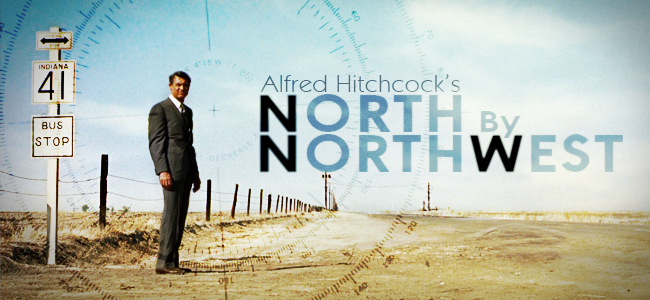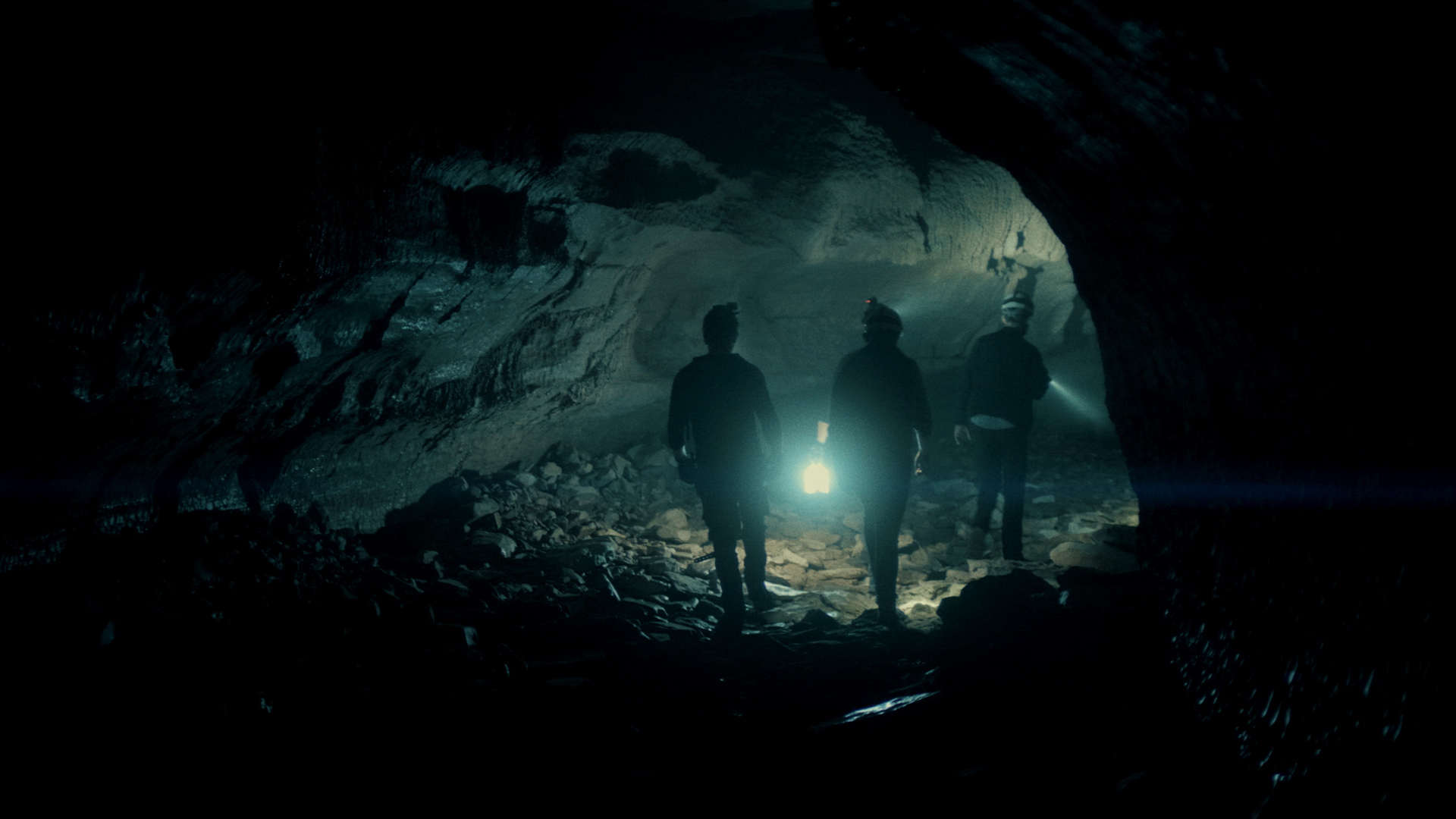
Hitchcock, Hollywood Spies & North by Northwest
- January 28, 2017
- 0
by Jay Dyer
(Jay’s Analysis)

So far we have only analyzed one Hitchcock film, Vertigo (1958), where we highlighted the use of mind control, doubling and voyeurism on the part of a shadowy Bohemian Grove-esque elitist intent on manipulating the middle class Scottie (Jimmy Stewart) based on a profiling of his psychological weaknesses. In North by Northwest (1959) similar themes emerge, yet the master of suspense seemed willing to reveal much more than merely psychoanalytical and Freudian elements, notably being the first film to mention the “CIA.”
Hitchcock was not merely a master of suspense, but the father of the espionage film, adapting spy tales from both William Somerset Maugham (himself MI6, whose novel Ashenden would become Hitchcock’s Secret Agent in 1936) and Joseph Conrad (The Secret Agent novel would become Sabotage in 1936), directing some of the most notable espionage films of all time, including 39 Steps, Notorious, Torn Curtain and The Man Who Knew Too Much. Yet the connections to British Intelligence and the Atlanticist establishment are an even deeper rabbit hole.
Researcher Michael Minnicino comments on the Hitchcock circles that included Sir Alexander Korda, prior to his rise to fame, showing Tavistock and Huxley connections. Tavistock, of course, would be instrumental in preparing the way for MK ULTRA and mass social engineering:
“The Kordas’ task was to generally develop a pro-British current in America and to plump for cultism. They hired Aldous Huxley to write the screenplays for the two-hit Star War-style fantasy pictures of the 1930s, Kipling’s Jungle Book and The Thief of Baghdad. in the process making Huxley’s name as a scenarist. (When the Kordas stayed in Hollywood they usually housed with one of a British clique there which included Huxley, the modernist composer Igor Stravinsky, and Tavistock psychologist Humphrey Osmond.) They kicked off the wave of historical epics which dominated the United States and Europe in the 1940s; Hitler, in fact, had their Rembrandt re-made under his own aegis.
Tavistock Rock: The Beatles, Crowley and TM, maaaaan…..
This historical series included two films that were never completed: Lawrence of Arabia. which was shelved when T. E. Lawrence, the British intelligence agent who was the subject, died in a motorcycle crash on his way to Korda’s home to discuss the film; and I. Claudius based on Robert Graves’s weird Isis novel, which collapsed when the star, Charles Laughton, went insane. (Public Television later made a cult hit out of the novel.) In the late 1930s the Kordas were recruited directly into British intelligence by Churchill, and started making overt propaganda in America.”
In regard to the technique of creating an atmosphere of fear and paranoia related to a “super reality” that is imposed upon some situation through a given narrative, Minnicino accurately connects this film approach to the Tavistock strategy of mind control. It thus becomes clear how Hitchcock’s voyeurism and shock-value would be useful in the realm of psy ops and propaganda. One need only think of our daily bombardment from the mass media in our ridiculous, perennial “war on terror.” Minnicino comments, opining that Hitchcock’s Spellbound is the first U.S. film to portray Satanism, borrowed from German Expressionism:
“Hitchcock used ordinary objects-as The Birds-to realize Miinsterberg’ s concept of shock effect:
‘Knowing what to expect . . . the audience . . . waits for it to happen. This conditioning of the viewer is essential to the build up of suspense.’
Hitchcock often gave the following example of how this worked. You show two men at a table having a mundane conversation. Then you pan to show that there is a bomb under the table timed to go off in moments. Then you go back to the conversation. The audience becomes anxiety-ridden listening to the conversation (“Don’t you realize you’re about to be blown up?!”) For Hitchcock, this is the epitome of filmmaking, the creation of a sort of super-reality to which only the audience is privy. However, this is also identical to Wilfred Bion’s discussion of group dynamics brainwashing techniques developed during World War II at British Secret Intelligence Service’s London Tavistock Institute. Bion, the mentor of the Wharton School’s Eric Trist as well as other leading social control theoreticians, determined that small groups could be manipulated if an astute leader (director) could convince them of a shared reality superior to the one they were discussing….
Hitchcock was brought to the United States in 1939 by David O. Selznick to direct Rebecca, with Laurence Olivier starring, and screenplay adaptations by Robert Sherwood and Thornton Wilder, both of whom would head the U. S. Office of War Information within a couple of years. Hitchcock stayed in the United States owing to the lavish funding he could get for his projects, including his psycho-active films like Spellbound. with a screenplay by Ben Hecht (collaborating with leading U. S. psychoanalysts) and set designs by surrealist Salvador Dali. Spellbound was the first U. S. film to have Satan cult imagery, something not seen since the heyday of the German Expressionists.”
Dali’s All-Seeing Eye Sequence in Spellbound:
Indeed, anyone inclined to doubt Hitchcock’s association with British Intelligence need only look at his work for The British Ministry of Information, where he produced war propaganda at the behest of the Secret Intelligence Service.
“During World War II, Alfred Hitchcock was called upon by the government of his native country to contribute to the Ministry of Information’s propaganda efforts, specifically that which was used to bolster the French Resistance to German occupation. The short films that resulted from this call to action were Bon Voyage and Aventure Malgache (translated Madagascar Landing), works that can also be described by such words as suspense, mystery, intrigue, irony, and fear. The purpose of this rhetorical analysis is to examine and describe the rhetorical strategies utilized by Alfred Hitchcock in Bon Voyage and Aventure Malgache.” (“Alfred Hitchcock Presents; ‘Propaganda’”: A Rhetorical Study of Alfred Hitchcock’s World War II Propaganda Films, pg. 32)
In fact, Hitchcock was even employed by the British Ministry to create a Nazi concentration camp film:
Bernstein served as film advisor to the British Ministry of Information and was chief of the Film Section of Supreme Headquarters, Allied Expeditionary Forces. It was in this latter capacity that he commissioned Hitchcock to make a compilation film on the Nazi concentration camps at the end of the war, with the purpose of showing the German people the nature of their leaders’ crimes. (David A.Cook, History of Narrative Film, 329).
For regular readers of JaysAnalysis, analyses of James Bond films and novels are frequent, but it was Hitchcock who would be highly influential in the creation of the cinematic icon of 007, particularly the imagery and expressionism found in North by Northwest. One need only think of the memorable train sequence comparable to From Russia With Love, for example. In fact, Bondologist Sinclair McKay argues the template for every 007 film was set by North by Northwest:
“And indeed, whether they acknowledge it or not, the template for pretty much every James Bond film had already been set down by director Alfred Hitchcock in 1959. North by Northwest, the story of an advertising executive (Cary Grant) who is mistaken for a spy finds himself sucked into a battle against sinister Van Damm (James Mason) while falling for a beautiful agent (Eva Marie-Saint), establishes a sex-and-setpieces sensibility that could not have failed to influence Broccoli and Saltzman. (The Man with the Golden Touch, pg. 13)
And,
“It may have been this performance [Notorious] rather than his larkier role in North by Northwest, that led to Cary Grant being considered for the role of Bond.” (Ibid., 69)
The consideration of Grant for Bond and his placement in numerous Hitchcock films is significant, as Cary Grant was himself a spy, involved in outing Errol Flynn as a Nazi sympathizer:
“In the summer of 1939, a Hollywood partnership was formed as a front for British Intelligence (MI6– Military Intelligence 6). It was made up of Samuel Goldwyn, Douglas Fairbanks, Sr., Alexander Korda (the Hungarian producer), Walter Wanger and Korda’s London Films. Cary Grant worked with this partnership to flush out Nazi sympathizers in Hollywood and its environs. (Another similar partnership was organized by Cecil B. DeMille at Paramount.)
Grant’s chief contact with British intelligence was Noel Coward, the author of numerous plays and humorous songs. It may surprise some film buffs to learn that the major accomplishment of Cary Grant the Nazi hunter was to out the Australian actor, Errol Flynn, as a Nazi sympathizer.”
Hitchcock favorite Jimmy Stewart was also rumored to have done intelligence work for the FBI on the side according to Michael Munn’s Jimmy Stewart: The Truth Behind the Legend, making his roles in Vertigo and Rear Window even more curious, given the plots. However, to make it all the more obvious, Stewart played the lead role in the FBI propaganda film, The FBI Story (a film given approval by Hoover). While these connections and associations don’t necessarily prove direct espionage work, they are suggestive, given Hitchcock’s propaganda work for British Military Intelligence.
Thus, as mentioned, it becomes clear why North by Northwest is the first film to mention the CIA by name. Still a relatively new agency following the OSS, the CIA was intimately connected to the advertising world through the Robert Mullen Company and J Walter Thompson Agency, as Jim Hougan writes: “Moreover, E. Howard Hunt’s espionage activities were carried out under the cover of Robert R. Mullen Company, a CIA front which had taken over Howard Hughes’ “public relations” account from Larry O’Brien and his Kennedy braintrust.” (Spooks, 360).
The relevance here is that Cary Grant’s character Roger O. Thornhill is roped into working for the nascent Agency by the sexual entrapment swallow operation of Eve Kendall (Eva Marie Saint). The other curious factor is the tendency in propaganda on the part of the West was generally to accuse rivals like Stalin’s NKVD of creating sex operatives, while the West was immune to such dirty work, yet here is one of the most famous film achievements of all time – the film that first mentions the “CIA,” features a CIA sex operative. It is worth noting as well the film is subtly a Cold War propaganda piece, too, as villain Van Damm (James Mason) is explicitly spoken of as working with Russians in a “Cold War.”
If the United Nations setting for the film seems odd, it shouldn’t – the same Rockefellers who, with British Intelligence, set up the OSS and CIA also helped establish the U.N. Once again we see the worlds of Hollywood and intelligence are mirror reflections of the same reality, as Hitchcock shows in detail in the infamous scenes involving staged news at the behest of the CIA. Thornhill is framed for the murder of a U.N. diplomat (by CIA design to nab Van Damm), as well as his own staged death at the hands of Eve (also CIA stagecraft). Readers may recall instances like Wag the Dog involving staged news, yet much earlier Hitchcock was showing the Agency’s sway over the mainstream headlines from the outset – far prior to Operation Mockingbird.










